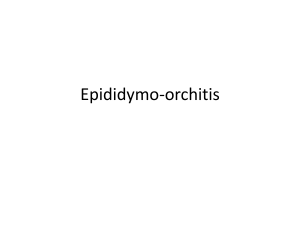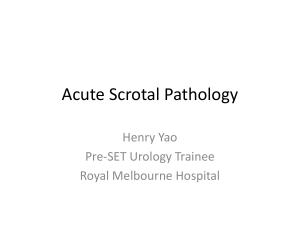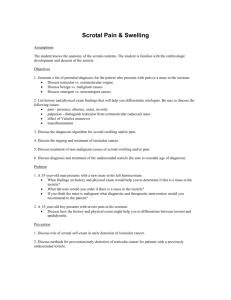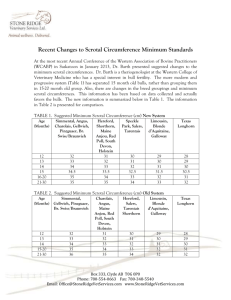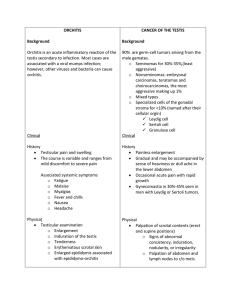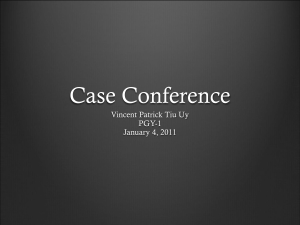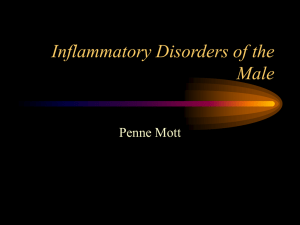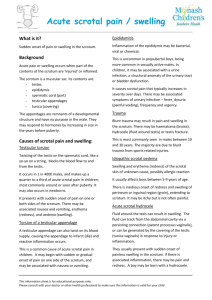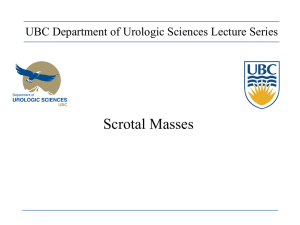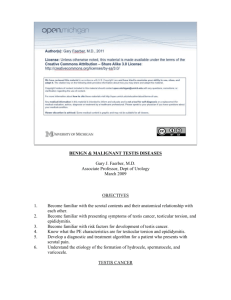non-acute scrotal pathology in adult males
advertisement
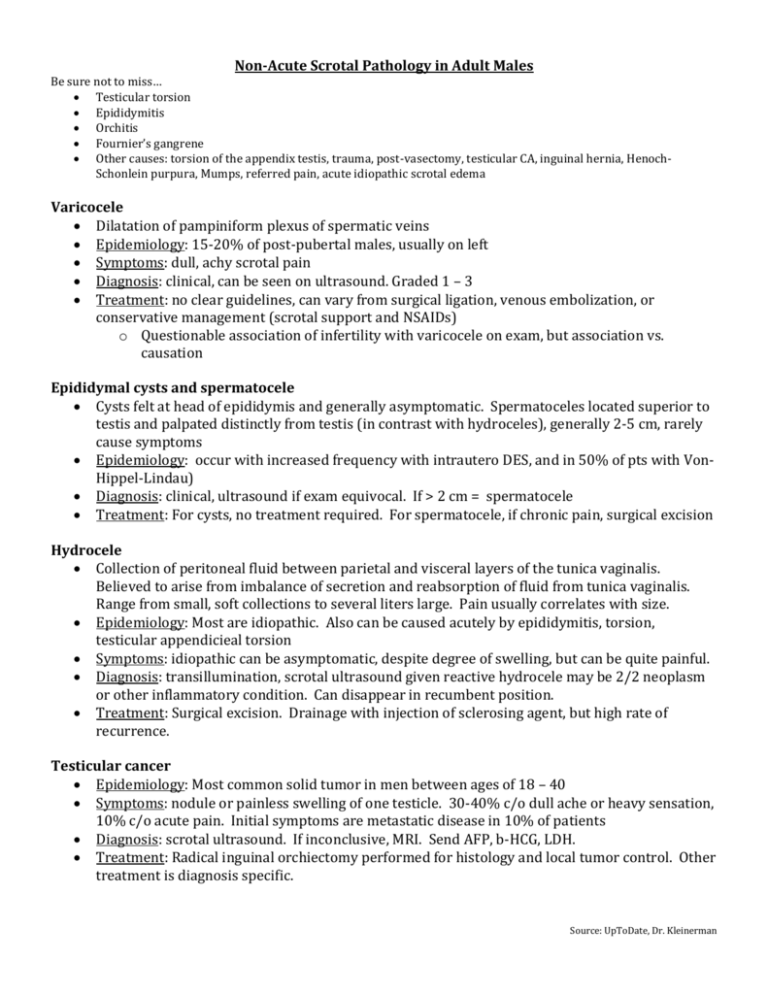
Non-Acute Scrotal Pathology in Adult Males Be sure not to miss… Testicular torsion Epididymitis Orchitis Fournier’s gangrene Other causes: torsion of the appendix testis, trauma, post-vasectomy, testicular CA, inguinal hernia, HenochSchonlein purpura, Mumps, referred pain, acute idiopathic scrotal edema Varicocele Dilatation of pampiniform plexus of spermatic veins Epidemiology: 15-20% of post-pubertal males, usually on left Symptoms: dull, achy scrotal pain Diagnosis: clinical, can be seen on ultrasound. Graded 1 – 3 Treatment: no clear guidelines, can vary from surgical ligation, venous embolization, or conservative management (scrotal support and NSAIDs) o Questionable association of infertility with varicocele on exam, but association vs. causation Epididymal cysts and spermatocele Cysts felt at head of epididymis and generally asymptomatic. Spermatoceles located superior to testis and palpated distinctly from testis (in contrast with hydroceles), generally 2-5 cm, rarely cause symptoms Epidemiology: occur with increased frequency with intrautero DES, and in 50% of pts with VonHippel-Lindau) Diagnosis: clinical, ultrasound if exam equivocal. If > 2 cm = spermatocele Treatment: For cysts, no treatment required. For spermatocele, if chronic pain, surgical excision Hydrocele Collection of peritoneal fluid between parietal and visceral layers of the tunica vaginalis. Believed to arise from imbalance of secretion and reabsorption of fluid from tunica vaginalis. Range from small, soft collections to several liters large. Pain usually correlates with size. Epidemiology: Most are idiopathic. Also can be caused acutely by epididymitis, torsion, testicular appendicieal torsion Symptoms: idiopathic can be asymptomatic, despite degree of swelling, but can be quite painful. Diagnosis: transillumination, scrotal ultrasound given reactive hydrocele may be 2/2 neoplasm or other inflammatory condition. Can disappear in recumbent position. Treatment: Surgical excision. Drainage with injection of sclerosing agent, but high rate of recurrence. Testicular cancer Epidemiology: Most common solid tumor in men between ages of 18 – 40 Symptoms: nodule or painless swelling of one testicle. 30-40% c/o dull ache or heavy sensation, 10% c/o acute pain. Initial symptoms are metastatic disease in 10% of patients Diagnosis: scrotal ultrasound. If inconclusive, MRI. Send AFP, b-HCG, LDH. Treatment: Radical inguinal orchiectomy performed for histology and local tumor control. Other treatment is diagnosis specific. Source: UpToDate, Dr. Kleinerman
